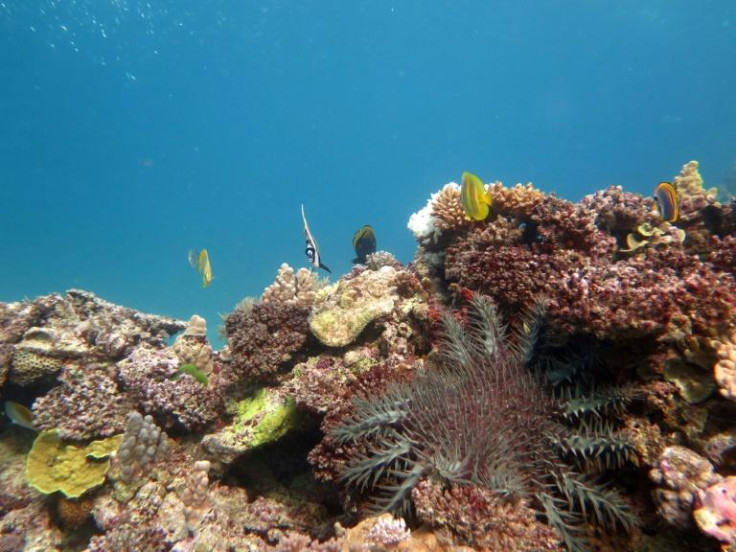Great Barrier Reef on the Brink: Australia's Natural Wonder Suffers Worst Coral Collapse in History
Scientists warn Australia's Great Barrier Reef may be nearing a point of no return after its worst coral cover collapse in nearly 40 years, driven by record marine heatwaves, cyclones and starfish outbreaks.

Australia's Great Barrier Reef, the planet's largest living structure and a jewel of the natural world, has suffered the steepest coral cover collapse since records began almost four decades ago. Scientists warn that without urgent action, this underwater paradise may be nearing a point of no return.
Once a dazzling mosaic of colour, the reef's northern and southern stretches have been stripped bare by an unprecedented marine heatwave, leaving vast underwater graveyards of bone-white skeletons. The destruction has been fuelled by climate change-driven sea temperatures, powerful tropical cyclones and swarms of coral-eating crown-of-thorns starfish.
A Summer of Underwater Carnage
The findings come from the Australian Institute of Marine Science (AIMS), which surveyed 124 reefs between August 2024 and May 2025. Their verdict is stark: the reef endured its most extensive and severe bleaching on record, with some sites losing up to 70 per cent of their coral in just one year.
In the far north, coral cover dropped from almost 40 per cent to 30 per cent. In the central section, home to some of the most visited dive sites, losses averaged 14 per cent, with reefs near Cairns hit particularly hard. The south fared even worse, shedding nearly a third of its coral after experiencing the highest heat stress ever recorded in the region.
'These corals are the fastest to grow and the first to go,' AIMS research leader Dr Mike Emslie told ABC News. 'The Great Barrier Reef is such a beautiful, iconic place. It is really worth fighting for. And if we can give it a chance, it has shown an ability to recover.'
Bleached White and Gasping for Life
Coral bleaching happens when sea temperatures rise above a species' tolerance, forcing it to eject the algae that give it colour and provide most of its food. The coral turns ghostly white, and if high temperatures persist, it starves to death.
Even a 1°C rise above the thermal limit for two months can be lethal. At 2°C above, survival time drops to around a month. The Great Barrier Reef has now endured six mass bleaching events since 2016, with the 2024 disaster coinciding with one of the most extreme global marine heatwaves ever recorded.
The bleaching was not confined to Australia's east coast. For the first time, both the Great Barrier Reef and Western Australia's Ningaloo Reef turned white at the same time.

Death by a Thousand Cuts
While extreme heat is the primary driver, the reef is also under siege from other threats. Cyclones have battered fragile corals, agricultural run-off is fuelling algal blooms and the notorious crown-of-thorns starfish is consuming coral at alarming rates.
The Australian government's culling programme has made headway, with more than 50,000 of the spiny predators killed by injecting them with vinegar or ox bile, but outbreaks continue to hinder recovery.
'These multiple stressors are pushing the ecosystem to its limits,' said WWF's Richard Leck. 'We are deeply concerned about what happens when the reef stops bouncing back the way it used to.'
A Shrinking Window for Recovery
Before the 1990s, mass bleaching on the Great Barrier Reef was rare. The first major event struck in 1998, followed by another in 2002. Since 2016, the intervals between bleaching events have collapsed, occurring in 2016, 2017, 2020, 2022, 2024 and again in 2025.
With less time to recover between assaults, the reef's long-term survival is under threat. Some of the most heat-sensitive species, such as the branching Acropora corals, are also the fastest to grow, meaning their loss has a rapid and visible impact on reef structure and biodiversity.
What's at Stake
The Great Barrier Reef is more than a natural wonder. It supports an estimated 25 per cent of all marine life and sustains a tourism industry worth billions of dollars to Australia's economy. It shields coastlines from storms and provides food and livelihoods for communities across the Pacific.
Scientists say better management, from controlling starfish outbreaks to improving water quality, could help buy time. However, the reef's fate ultimately depends on rapid and drastic cuts to greenhouse gas emissions.
'The future of the Great Barrier Reef will be determined by the climate choices we make in the next decade,' Leck warned. 'Without ambitious action, we risk losing one of the planet's most extraordinary ecosystems.'
For now, some stretches of the reef still shine with the brilliance that made it a UNESCO World Heritage site. But beneath the turquoise waves, the clock is ticking, and without decisive global action, Australia's crown jewel could fade into memory rather than remain a living wonder.
© Copyright IBTimes 2025. All rights reserved.



















